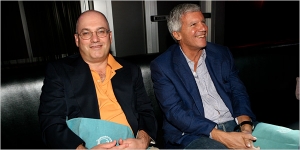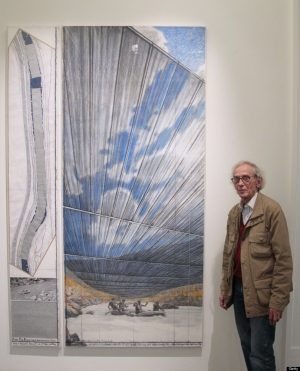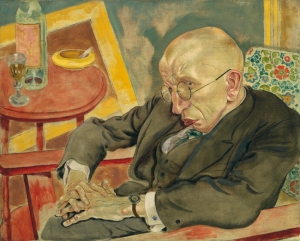|
Displaying items by tag: Lawsuit

While hedge-fund owner, Steven A. Cohen, is embroiled in a financial fiasco, the art world is anxiously waiting to see what will become of his impressive art collection. The U.S. Securities and Exchange Commission has informed Cohen that his $14 billion company, SAC Capital Advisors LP, could be at the center of an insider-trading lawsuit. The SEC is currently suing SAC Capital’s former portfolio manager, Mathew Martoma.
Cohen, who is worth $9.5 billion, started building his collection around 2001 and is now regarded as one of the biggest and most influential art collectors. Once a major buyer of Impressionist works, Cohen began collecting more contemporary pieces and helped raise prices of big-name artists like Damien Hirst, whose shark in formaldehyde, titled The Physical Impossibility of Death in the Mind of Someone Living, he bought for $8 million.
Cohen’s collection also includes works by Vincent van Gogh, Edouard Manet, Willem de Kooning, Pablo Picasso, Paul Cezanne, Andy Warhol, Francis Bacon, and Jasper Johns. If Cohen’s troubles worsen, he may be forced to dismantle his carefully assembled collection and begin selling his artworks.
Two members of the Metropolitan Museum of Art in New York are suing the institution for deceiving the public by making patrons think that the suggested admission fees are mandatory. The historically free institution suggests entry fees of $25 for adults and less for seniors and students.
Theodore Grunewald and Patricia Nicholson files the suit in state court in Manhattan and said that the museum’s fee policy lacks transparency. They also argued that and that the museum fails to note that the fee is suggested on several of its websites and that it’s only in fine and barely legible print on signs near cash registers. A statute was put in place in 1893 declaring that the Met must remain free in order to continue receiving government funding.
Grunewald and Nicholson commissioned a survey of visitors to the museum and found that 85% of patrons believed they had to pay to gain entry.

Domenico De Sole, chairman of the fashion powerhouse, Tom Ford International, is suing Michael Hammer, chairman of the disgraced Knoedler Gallery. De Sole and his wife, Eleanore, claim that Hammer sold the couple a fake Mark Rothko (1903–1970) painting (Untitled, 1956) for $8.3 million back in 2004. The allegation against Hammer is an amendment to a lawsuit that was originally filed against Knoedler on March 28.
De Sole’s suit is one of three against Knoedler and its former director, Ann Freedman. The suits all claim that Knoedler Gallery knowingly sold counterfeits. Between the three cases, the plaintiffs are seeking more than $70 million in damages.
Knoedler closed on November 30, 2011 after 165 years in the art world. A claim that the gallery sold a fake Jackson Pollack (1912–1956) painting for $17 million was the reason for Knoedler’s abrupt departure.
In addition to Hammer, the De Sole suit has introduced three new defendants to the ongoing Rothko/Knoedler case. Glafira Rosales, a Long Island art dealer who consigned artworks to Knoedler is newly involved as is as Jaime Andrade, a former Knoedler employee who introduced Rosales to the gallery. Jose Carlos Bergantinos Diaz, Rosales companion and business partner has also been added to the suit.
When Knoedler sold Untitled, 1956 to the De Soles, Freedman claimed that a Swiss collector had bought it directly from Rothko, and after the collector’s death, Knoedler was responsible for selling the work on his son’s behalf. The gallery had bought the painting from Rosales a year earlier for $950,000 and relied on her work about the painting’s provenance. Suspicions arose after Knoedler Gallery closed amidst the Pollack scandal and the De Soles’ lawyers hire a forensic conservator who found the painting’s marks and composition were inconsistent with Rothko’s technique.

Known for his massive environmental works of art that interact with the natural landscape, the Bulgarian artist, Christo (b. 1935), has been ordered by a federal judge to halt the installation of his latest project until a lawsuit involving the work reaches a conclusion.
Created by Christo and his late wife, Jeanne-Claude (they worked collaboratively under the moniker Christo), Over the River involves hanging long stretches of translucent fabric for two weeks above various parts of the Arkansas River in Colorado. Girded by steel cables that will be anchored on either bank, the project will consume almost seven miles of the river.
The environmentalist group Rags Over the Arkansas River Inc. (ROAR) brought the lawsuit against Christo as they fear the project will affect local fisheries and natural habitats and disturb the locals. Although the Bureau of Land Management approved the project in 2011, Christo will serve as a co-defendant alongside the Bureau in order to uphold his and Jeanne-Claude’s vision.
The couple’s iconic body of work includes The Gates, which was installed in New York City’s Central Park in 2005, and Running Fence, a 24 mile-long artwork that ran through California’s Sonoma and Marin counties in 1976. Christo and Jeanne-Claude’s projects often stirred up controversy based on their sheer scale, but it is also this otherworldliness that makes them visually unforgettable.

The case involving a congregation of Catholic nuns headquartered near here, which sued a Santa Fe, N.M., art dealer and a local appraiser for fraud in the sale of a painting by Nineteenth Century genre artist William-Adolphe Bouguereau, has ended, with the sisters unsuccessful in their attempt to be made whole on the painting's true value.
The case went to jury trial in December. Before Justice Michael C. Lynch of the Albany County Supreme Court on January 6, closing arguments were presented to the jury after a brief hiatus during the New Year's holiday. The case went to the jury on Monday, January 9, and by Monday afternoon the verdict came back — the two men on trial for "scamming" the sisters, Mark Zaplin and Mark LaSalle, were found not guilty.
"I'm shaking! It's been a three-year nightmare," said a relieved Zaplin when contacted after word of the jury's decision came down. "There was no fraud here and the jury found 100 percent in our favor."
In August 2008, the Daughters of Mary Mother of Our Savior and St Joseph's Chapel, based in Round Top, N.Y., claimed that the dealer, Zaplin, and Mark LaSalle, a New York State art appraiser, colluded to defraud them of the $1.7 million they believe they could have gotten for selling "Notre Dame des Anges," an 1889 work by Bouguereau that depicts Mary standing in the clouds with the Christ Child surrounded by angels. (See Antiques and The Arts Weekly, March 30, 2009.)

When the Expressionist artist George Grosz, a celebrated painter, fled Nazi Germany in 1933, he left behind two important oil paintings and a watercolor with his Berlin dealer. Next month the United States Supreme Court, in deciding whether to hear the case, will determine whether Grosz’s heirs have any hope that legal action will help them recover the works from their current owner, the Museum of Modern Art.
The lawsuit is an emotional, last-ditch effort by Grosz’s son Martin, and Martin’s sister-in-law, Lilian, to reclaim works they say were lost in the midst of Nazi persecution, only to end up two decades later in one of the world’s most elite art institutions.
Beyond the family, the case has drawn the attention of Jewish groups and experts in international law who argue that the Grosz case, like many others concerning art looted or lost during World War II, have too often been decided not on the merits but on whether claimants filed suit before the legal time limit.
MoMA, for example, has won several lower court decisions in the Grosz case because judges have ruled that the family simply filed its suit too late to be considered under New York State law. The United States has twice signed international agreements that urged nations to decide Holocaust-recovery claims based on their substance, not on legal technicalities. But the agreements do not have the force of law.
“Museums are breaking their own ethics codes and causing the U.S. government to break its international commitments by invoking our courts to resolve Holocaust-era art claims on technical grounds rather than on the merits,” said Jennifer Anglim Kreder, co-chairwoman of the American Society of International Law’s Interest Group on Cultural Heritage & the Arts.
Ms. Kreder is an author of a “friends of the court” brief supporting the Groszes. Several other organizations have also weighed in to argue against the use of statutes of limitations to bar such claims. The organizations include the American Jewish Congress and the nonprofit Commission for Art Recovery.
The museum, which acquired the works in the 1950s, declined to comment because the case is being litigated. But it has maintained in court documents that, regardless of the timing issue, it has diligently researched the artworks’ provenance and has found no evidence that the works were looted by the Nazis or any basis for disputing their legitimate ownership.
Raymond J. Dowd, the Groszes’ lawyer, counters that the lower court considered inadmissible evidence and also failed to take into account a 1998 federal law that was intended to help Holocaust-era victims recover their assets.
Since 2004, the Supreme Court has refused to review several Nazi-era art cases, most recently in June when it decided not to review a case brought against the Norton Simon Museum in Pasadena, Calif., which ran afoul of a different deadline statute. Lawyers involved in Grosz v. Museum of Modern Art agree that it is unlikely that the high court, given its reluctance to weigh in on matters of state law, will take up this case when it meets on Sept. 26 to review the appeal.
|
|
|
|
|